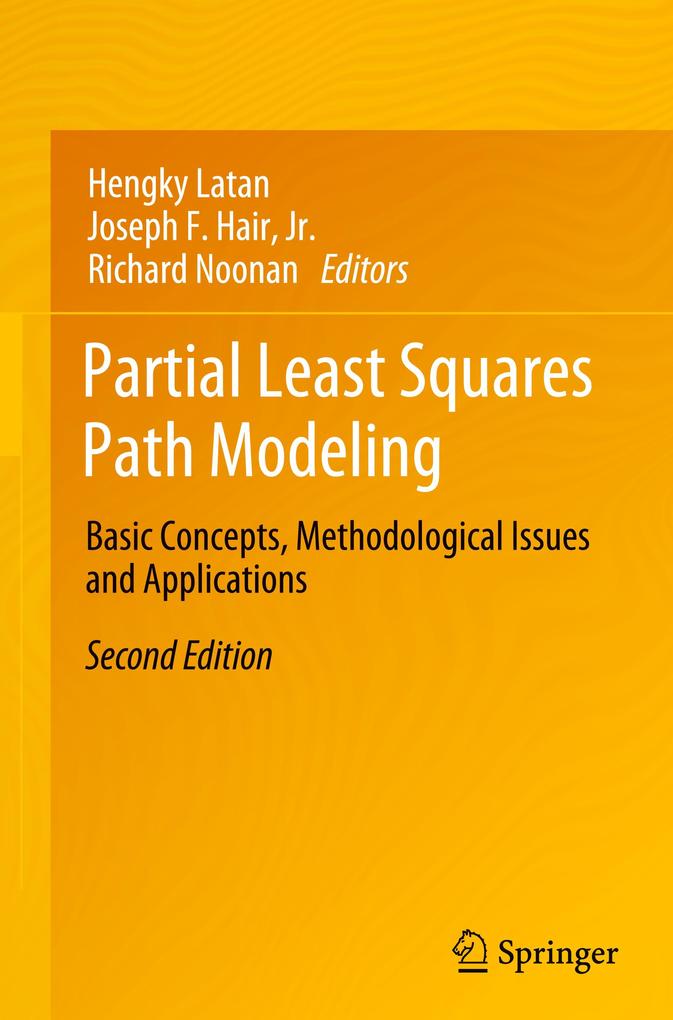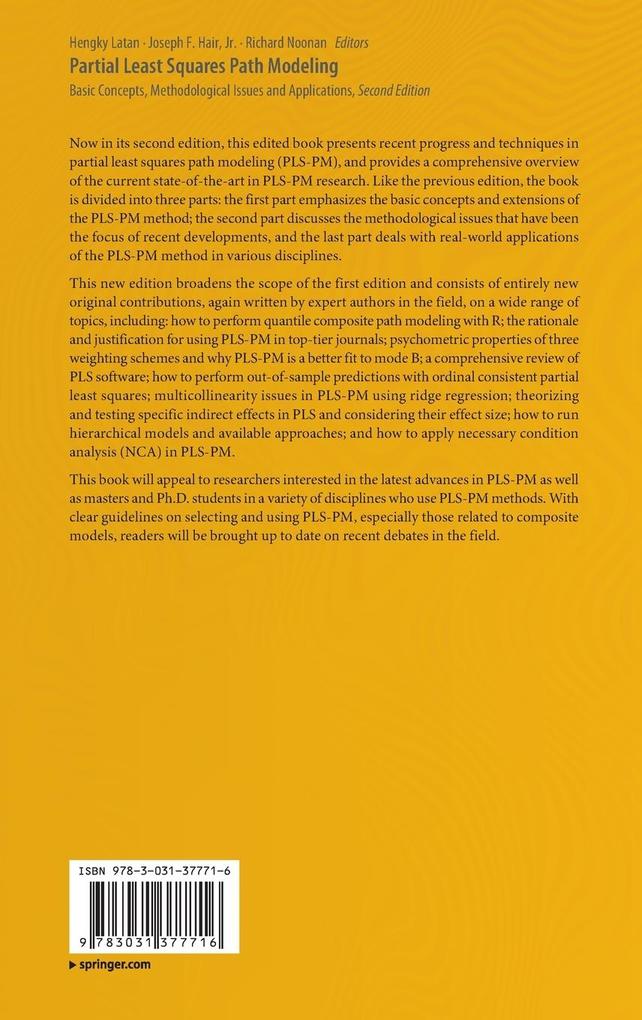Now in its second edition, this edited book presents recent progress and techniques in partial least squares path modeling (PLS-PM), and provides a comprehensive overview of the current state-of-the-art in PLS-PM research. Like the previous edition, the book is divided into three parts: the first part emphasizes the basic concepts and extensions of the PLS-PM method; the second part discusses the methodological issues that have been the focus of recent developments, and the last part deals with real-world applications of the PLS-PM method in various disciplines.
This new edition broadens the scope of the first edition and consists of entirely new original contributions, again written by expert authors in the field, on a wide range of topics, including: how to perform quantile composite path modeling with R; the rationale and justification for using PLS-PM in top-tier journals; psychometric properties of three weighting schemes and why PLS-PM is a better fit to mode B; a comprehensive review of PLS software; how to perform out-of-sample predictions with ordinal consistent partial least squares; multicollinearity issues in PLS-PM using ridge regression; theorizing and testing specific indirect effects in PLS and considering their effect size; how to run hierarchical models and available approaches; and how to apply necessary condition analysis (NCA) in PLS-PM.
This book will appeal to researchers interested in the latest advances in PLS-PM as well as masters and Ph. D. students in a variety of disciplines who use PLS-PM methods. With clear guidelines on selecting and using PLS-PM, especially those related to composite models, readers will be brought up to date on recent debates in the field.
Inhaltsverzeichnis
Introduction to the Partial Least Squares Path Modeling: Basic Concepts and Recent Methodological Enhancements. - Quantile Composite-Based Path Modeling with R: A Hands-On Guide. - Use of Partial Least Squares Path Modeling within and across Business Disciplines. - Statistical and Psychometric Properties of Three Weighting Schemes of the PLS-SEM Methodology. - Software Packages for Partial Least Squares Structural Equation Modeling: An Updated Review. - Revisiting and Extending PLS for Ordinal Measurement and Prediction. - Multicollinearity: An Overview and Introduction of Ridge PLS-SEM Estimation. - Demystifying Prediction in Mediation Research and the Use of Specific Indirect Effects and Indirect Effect Sizes. - Alternative Approaches to Higher-Order PLS-Path Modeling: A Discussion on Methodological Issues and Applications. - How to Apply Necessary Condition Analysis in PLS-SEM. - New Insights for Public Diplomacy Using PLS-SEM to Analyze the Polyphony of Voices: Value Drivers of the Country Image in Western European and BRICS countries. - To Survive or Not to Survive: Findings from PLS-SEM on the Relationship between Organizational Resources and Startups Survival. - Influence of Earnings Quality Dimensions on the Perception of Earnings Quality: An Empirical Application of Composite PLS using Archival Data. - Importance Performance Map Analysis of Capital Structure Using PLS-SEM: Evidence from Non-Financial Sector.



































